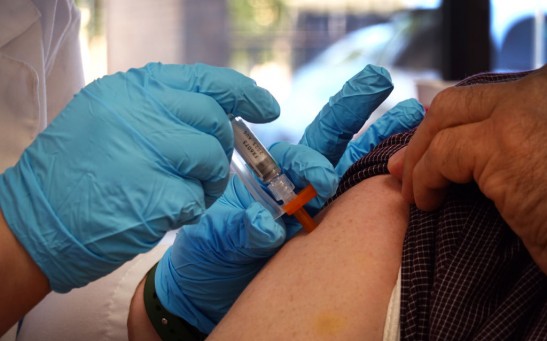Omicron

KP.3 COVID-19 Subvariant on the Rise in the US; Experts Warn of Potential 'Summer Wave' of Cases

FLiRT COVID Strain Summer Wave: Scientists Warn of Seasonal Surge Amidst Detection, Spread of New Omicron Subvariants; What Are Their Symptoms?
Highly Mutated Variant of COVID-19 Virus Puts Scientists on Alert As They Scramble To Understand How Far It Has Spread

COVID-19 Alert: New Coronavirus Variant 'Arcturus' Sweeps Through India, Other Countries; Strain Appears To Have Unique Symptom

New York City Rats Get Infected With Coronavirus, Showing That They Could Be Carriers of COVID Variants

WHO Warns: Omicron Subvariant XBB.1.5 Evades Antibodies From Vaccines and Infection; Most Transmissible COVID-19 Variant Yet

China's COVID-19 Situation: Here’s What TAG-VE Said During January 3 Meeting

New Omicron Variant Now Accounts for 41% of All COVID-19 Cases in the US Just in Time for the New Year

BQ1 COVID-19 Variant is Resistant to Existing Treatments and Quickly Becoming Dominant in the US

COVID-19 Subvariant Spreads Fast in THE US, Europe; Study Suggests Evusheld Drug May Not Be Effective as Antibody Treatment

Negative COVID-19 Test May Also Mean Infection with Omicron Variant If You Have Symptoms

Evasive Omicron Tactics Offset by Booster Shots; Study Says

CDC Recorded BA.4 and BA.5 Omicron Sub Variants As Predominant Strains in US

COVID-19 Cases in Israel Rise; New BA.5 Variant Causes 70% Spike in the Number of Severely Ill Patients
Most Popular

China’s Tiangong Space Station to Expand Its Capabilities With New Modules

AI Revolution in Medical Education: Transforming How Healthcare Professionals Learn

Exploring Life Beyond Earth: Study Claims Other Planets Could Be Suitable for Alien Life

Out of Office, Not Out of Mind: Planning for Employee Holiday Absences






